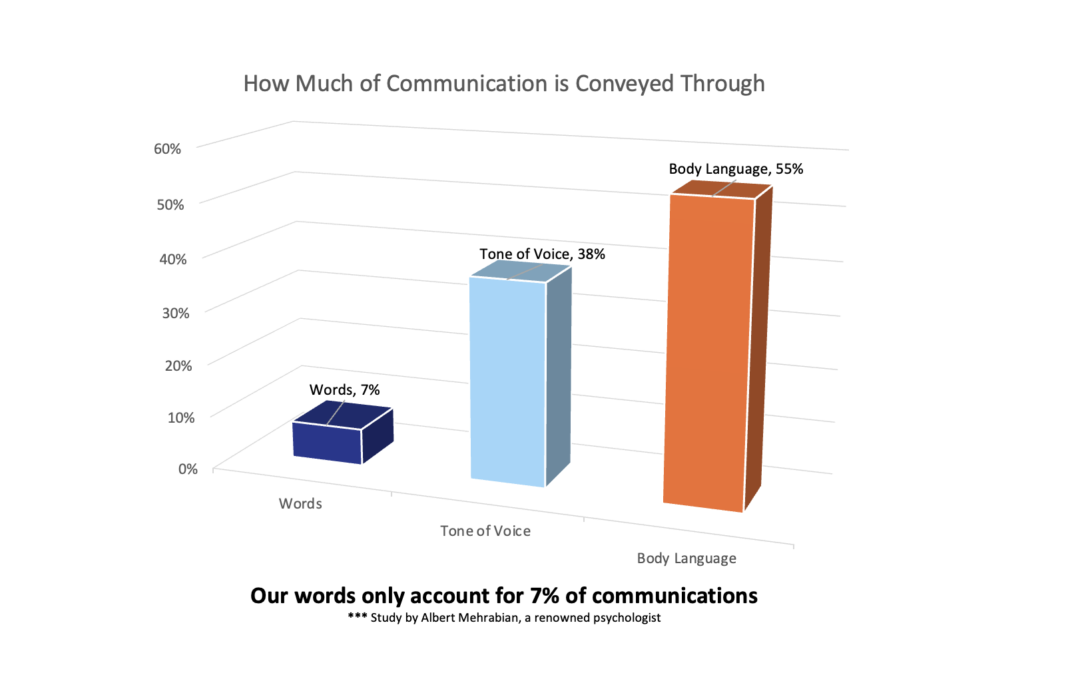We live in a world where communication has never been easier—or so it seems. Email, text messages, and social media dominate how we connect with one another, yet something crucial often feels missing. The issue? The overabundance of text-based communication strips away the essential elements that make communication rich, nuanced, and deeply human.
Albert Mehrabian, a renowned psychologist, studied how humans convey emotions and attitudes. His findings revealed that words alone are the least significant part of our communication when it comes to expressing feelings. Instead, tone of voice and body language play far larger roles. Let’s explore why this matters in today’s digital age—and how to reclaim the missing pieces of meaningful communication.
—
The Breakdown of Communication
Mehrabian’s study showed that communication, especially emotional communication, can be broken down into three categories:
- Body Language (55%): This includes facial expressions, gestures, posture, and overall physical presence. It’s the most significant factor in conveying emotions.
- Tone of Voice (38%): The way we say things—our inflection, pitch, and pace—adds a layer of meaning that words alone can’t achieve.
- Words (7%): Surprisingly, the literal meaning of the words we choose is the least impactful element when it comes to conveying emotion.
This model highlights a key truth: when the words don’t match the tone or body language, people are more likely to believe what they see or hear rather than what is said.
—
What Happens in a Text-First World
Fast forward to today. The majority of our communication happens in text—emails, chat messages, and social media posts. While this makes communication efficient, it often sacrifices clarity and connection. Why? Text eliminates 93% of the equation: tone and body language.
When words are the only tool we have, we lose:
- Emotional Context: Sarcasm, excitement, and empathy often get lost or misunderstood.
- Nuanced Messaging: Without inflection or expression, it’s harder to convey subtle distinctions in meaning.
- Human Connection: Body language and tone make us feel closer to one another. Text can feel cold and impersonal in comparison.
This is why text messages can so easily lead to misunderstandings—and why emojis and GIFs have become makeshift attempts to fill the gap.
—
Why Video and Voice Matter
Incorporating tone and body language back into your communication—whether through video, live streams, or even voice notes—restores the balance and improves how your message is received. Here’s why video and voice content are so powerful:
1. Builds Trust: Seeing someone’s face and hearing their voice creates a sense of familiarity and authenticity.
2. Enhances Clarity: Tone and body language ensure that your words are understood as intended.
3. Humanizes Communication: Adding nonverbal elements reminds people they’re interacting with a real person, not just a screen.
On platforms like LinkedIn, video content allows professionals to go beyond written updates and create deeper connections with their audience. A well-crafted video can communicate passion, sincerity, and expertise in ways text alone cannot.
—
How to Communicate Effectively in a Digital Age
If we want to make the most of today’s communication tools while avoiding their pitfalls, we need to be intentional about how we communicate. Here’s how you can adapt:
1. Meet in Person: Nothing can beat an effective in-person meeting, as you can easily achieve the remaining 93% of communication. Video calls, while help, still limit how much of the person and the room you can read.
2. Use Video Strategically: Incorporate video updates, introductions, or presentations to bring your message to life.
3. Choose Words Carefully in Text: Be precise, clear, and empathetic in your written communication. Use punctuation and formatting to mimic tone and pacing.
4. Leverage Emojis and Visuals: These can help convey emotion and tone in text-based mediums.
5. Don’t Underestimate Voice Messages: In some cases, a quick voice note can convey more warmth and meaning than a typed sentence.
6. Study Books That Can Improve Your Writing: Books like Smart Brevity: The Power of Saying More with Less by Axios founders Jim VandeHei, Mike Allen, and Roy Schwartz provides great approaches to communicate better in a fast-paced, text-first world.
—
The Takeaway
In an age where text-based communication dominates, we’ve lost much of what makes communication truly meaningful. By incorporating tone and body language—whether through video, voice, or in-person interactions—we can reconnect with the emotional richness that words alone cannot provide.
Remember: communication is more than just information. It’s connection. And in a digital world, those who humanize their communication will stand out, build trust, and leave a lasting impact.
#H2H #Communication #Connection #Humanize
>>>>>>>>>
And as always —

➡️ Give me a follow on LinkedIn: www.linkedin.com/in/knoxkeith
➡️ Subscribe to my newsletter: https://validatedbyknox.com/newsletter


